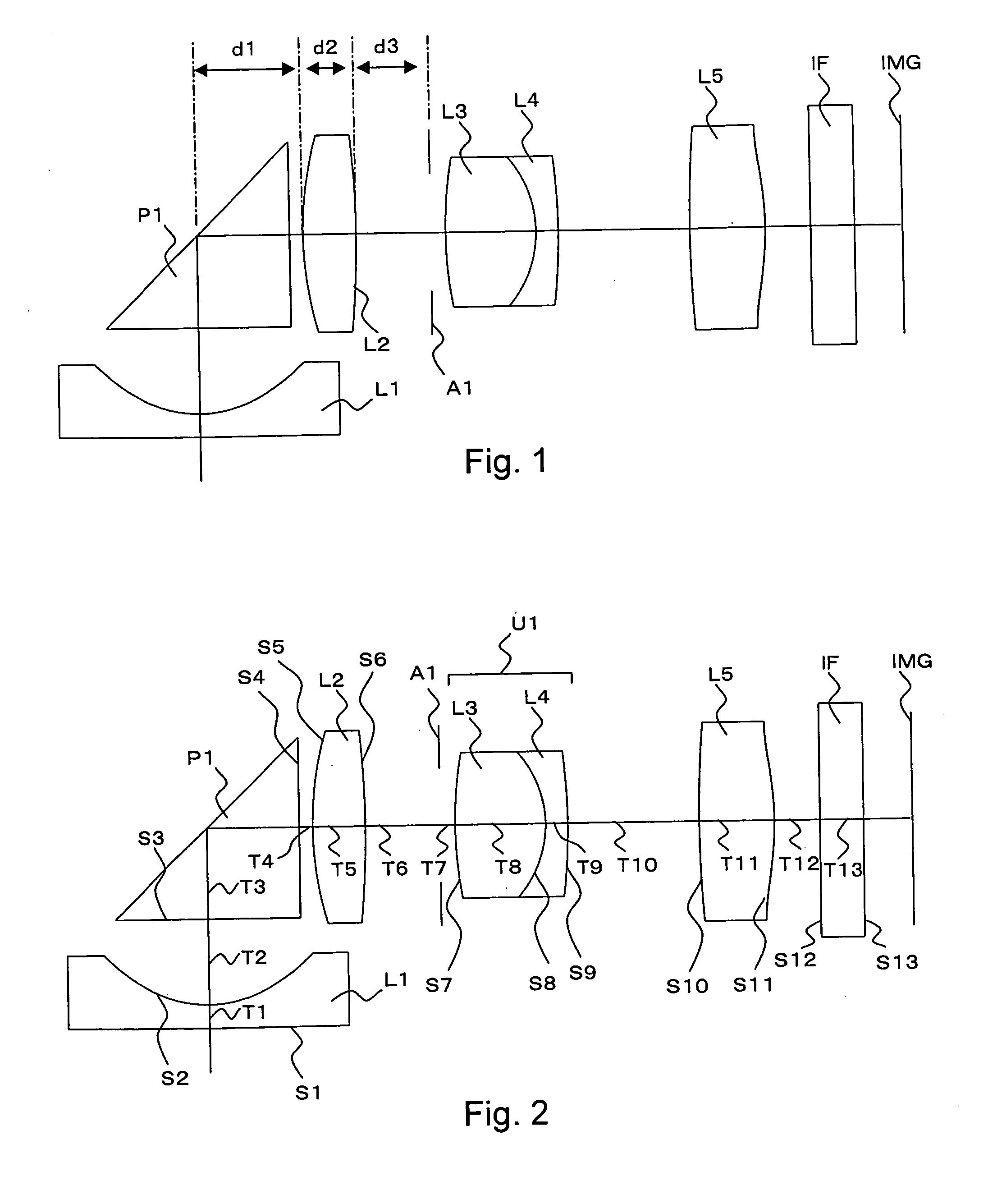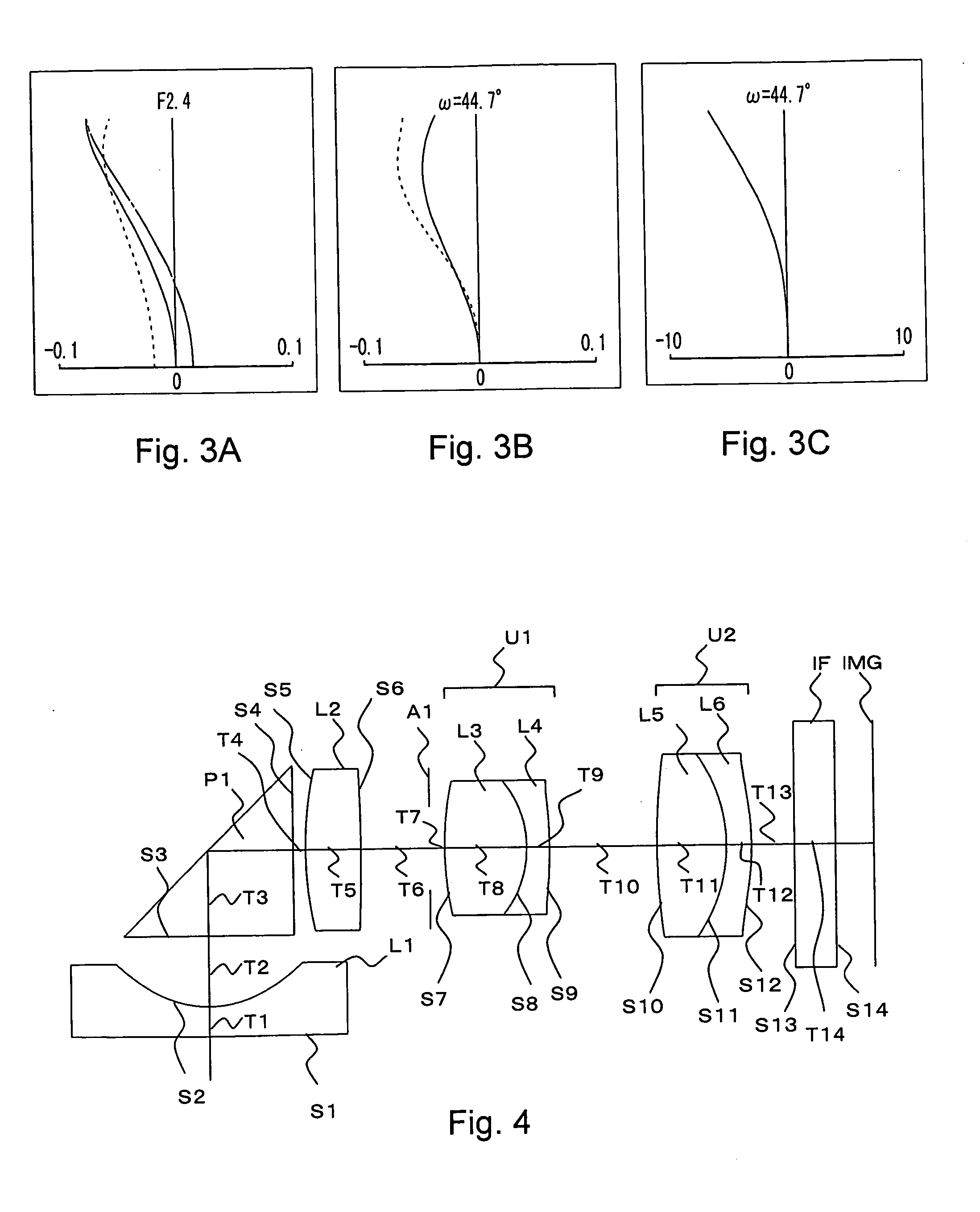Wide angle lens system and camera
a wide angle lens and wide angle technology, applied in the field of wide angle lens systems and cameras, can solve the problems of not being able to disclose effective means, unable to correct light beam aberration, and unable to etc., and achieve excellent image forming performan
- Summary
- Abstract
- Description
- Claims
- Application Information
AI Technical Summary
Benefits of technology
Problems solved by technology
Method used
Image
Examples
first embodiment
[0050] A first embodiment will now be described. FIG. 2 is a cross-sectional view of a wide angle lens system according to the first embodiment along an optical axis. The wide angle lens system depicted in FIG. 2 is the same as the above-described wide angle lens system shown in FIG. 1, and hence the explanation of the lens configuration will be omitted. Table 1 shows respective numeric values in the first embodiment. In Table 1, f is a combined focal length of an entire lens system constituting the wide angle lens system, Fno is an F number, and ω is a half field angle. Further, in FIG. 2 and Table 1, surface numbers Si (i=1, 2, 3 . . . ) denote an incidence surface and exist surface of light on an optical axis of each optical element constituting the wide angle lens system in order from an object side. Furthermore, in FIG. 2, intervals Ti (i=1, 2, 3 . . . ) designate on-axis intervals (mm) in order from the object side. Moreover, here, a reflecting surface position of a triangular...
third embodiment
[0059] A third embodiment will now be described. FIG. 6 is a view showing a cross section of a wide angle lens system according to a third embodiment along an optical axis. A lens configuration of the wide angle lens system depicted in FIG. 6 is the same as that of the wide angle lens system shown in FIG. 2, and the explanation of the lens configuration is omitted.
[0060] Table 7 shows respective numeric values in the third embodiment. Moreover, Table 8 shows aspheric coefficients of surfaces formed into aspheric surfaces in the third embodiment. Additionally, Table 9 shows values of respective parameters of Conditions (1) to (4) in the third embodiment. It is to be noted that symbols in the respective tables are the same as those in Table 1 to Table 3. It is to be noted Table 7 shows that a last lens L5 is formed of a cycloolefin-polymer-based plastic material based on numeric values of nd and vd.
TABLE 7f = 3.88 Fno = 2.8 ω = 44.7°CURVATUREREFRAC-ABBESURFACERADIUSINTERVALTIVENUMB...
PUM
 Login to View More
Login to View More Abstract
Description
Claims
Application Information
 Login to View More
Login to View More - R&D
- Intellectual Property
- Life Sciences
- Materials
- Tech Scout
- Unparalleled Data Quality
- Higher Quality Content
- 60% Fewer Hallucinations
Browse by: Latest US Patents, China's latest patents, Technical Efficacy Thesaurus, Application Domain, Technology Topic, Popular Technical Reports.
© 2025 PatSnap. All rights reserved.Legal|Privacy policy|Modern Slavery Act Transparency Statement|Sitemap|About US| Contact US: help@patsnap.com



